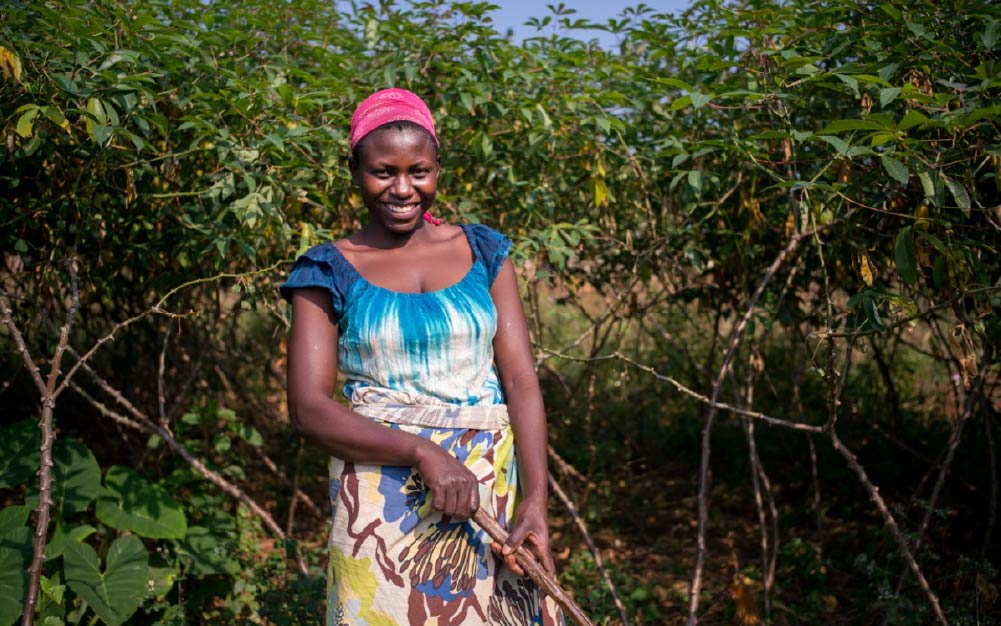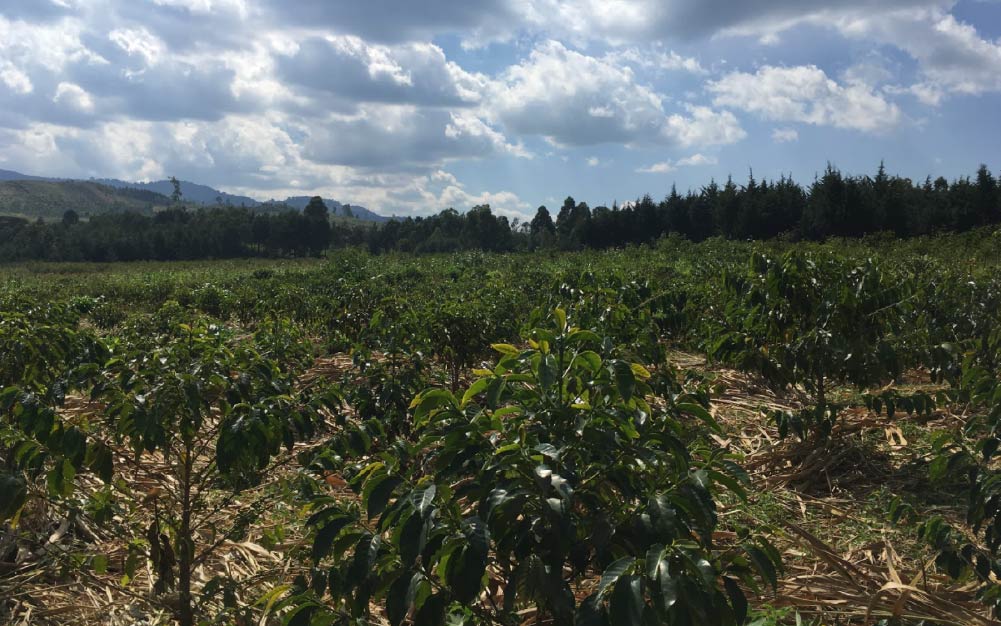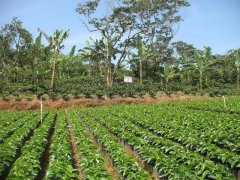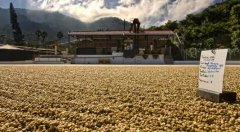Introduction of Congolese coffee producing areas is Arabica or Robusta?

In the 1970s, the Democratic Republic of the Congo was one of the major coffee exporters in Africa. However, the civil war and political unrest that have continued since the 1990s have had a huge impact on the country's coffee industry. In addition to poverty and disease, conflicts have claimed 6 million lives and displaced thousands in recent years. As a result, the Democratic Republic of the Congo (DRC) exported 120000 tons of coffee per year in the late 1970s to 10000 tons per year in 2002. Despite these challenges, the Democratic Republic of the Congo (DRC) is re-emerging as the origin of coffee. Among the many different initiatives within and outside the country, the country is rapidly known for its specialty coffee because of the best growth conditions it provides. Please continue to read for more information. The recovery of the Democratic Republic of the Congo the Democratic Republic of the Congo is the second largest country in Africa. It is also home to about 87 million people, making it the fourth most populous country on the African continent. Before the collapse in production in the 1990s, the Democratic Republic of the Congo (DRC) was a major producer of Robsta. Today, however, it is becoming more and more famous for its high quality Arabica coffee. Since 2010, cooperatives have been established throughout the country, some of which are funded by international non-governmental organizations and national development agencies. In 2012, the Congolese Government allocated US $100 million to invest in the coffee industry, with a particular focus on coffee-growing areas, such as South Kivu, which provided the best conditions for high-quality Arabica production. In addition, the country's private sector investment is revitalizing its coffee industry. During the webinar "exploring Congolese Coffee: a Green buyer experience", Kamabale Kisumba Kamungele, president of the Congo branch of the African High Coffee Association (AFCA), explained that coffee production in the country was growing. In a short period of ten years, exports of the Congolese Arabica have increased from 8000 to 9000 metric tons to about 12000 tons per year. The coffee-producing area of the Democratic Republic of the Congo (DRC) provides many areas, which provides ideal conditions for growing coffee. The two most popular varieties in the country are bourbon and Blue Mountain (a derivative of the Typica variety, which originated in Jamaica). Iturri spans 5200 square kilometers of terrain terrain, mountains and valleys in the Iturri region of northern Democratic Republic of the Congo. It borders Uganda and Lake Albert, and its fertile clay sandy soil is very suitable for growing quality coffee. Iturri's coffee grows between 1600 and 1900 Masr. Kisamba explained that one of the main problems with Iturri's coffee is that it is often smuggled into Uganda. "there are no good regulations to protect the domestic market [in the Democratic Republic of the Congo]," he told me. " "[therefore], a lot of Iturri [coffee] crosses the border because it is not easy to travel through Uganda." Despite these challenges, Ituri has attracted constant attention from buyers in recent years because of its stable quality and quantity. Coffee grown in Iturri (Ituri) usually has flavors of sugar cane, grapefruit, plum and blackcurrant, with a balanced body and acidity. The northern part of Greater Nord, located in North Kivu, remains one of the most productive areas in the Democratic Republic of the Congo. It covers an area of nearly 25000 square kilometers and produces between 1200 and 2200 Masra coffee. Kisumba explained that this is a "very interesting" area because it produces large amounts of Arabica and robusta coffee at the same time. He added that the region was also home to the Rwenzori Mountains of the Democratic Republic of the Congo bordering Uganda.

In a cup north of Grande, you will find aromas of tropical fruit, lemon and honey, as well as medium body and citrus acidity. Petit Nord in Little North Kivu covers an area of 10000 square kilometres and includes coffee-growing areas such as Masisi,Rutshuru,Nyiragongo and Walikale. It borders Virunga National Park, which is home to many different environmental sustainability initiatives, including an EU-funded coffee project implemented by the Virunga Union and African farms. Coffee from the region grows in clay-rich Sandy volcano soil, between 1400 and 1800 masl. They usually have smooth bodies, similar to citrus acidity and flavors of blackberries, grapes and lemons. Bord du Lac the region is located in the Albertine Rift Valley, which borders Rwanda. It consists of three main producing areas: Kabare,Kalehe and Idjwi Island. With an area of just over 7300 square kilometers, it is home to famous coffee cooperatives such as SOPACDI and Muungano. The growing time of Bord du Lac coffee is between 1450 and 1800 Masra, and the planting conditions in this area are very favorable. In a cup from Bord du Lac, you can taste aromas of tropical fruits, apples, jasmine, chocolate, coffee flowers, oranges and blackberries. Luzizi Ruzizi area is located in the southeast of the Democratic Republic of the Congo (DRC). "the region borders Rwanda and Burundi, so coffee from the region tends to be somewhat similar," Kisumba said. "the most commonly used variety there is bourbon. This is a volcanic area where coffee often tastes like citrus and fruit. " The area covers an area of about 16000 square kilometers, ranges from 1400 to 2400 Mars above sea level and has a citrus-like fruit flavor. The coffee in the area is famous for its medium body and flavors of lemon, tropical fruit and melon. Challenges facing the coffee industry in the Democratic Republic of the Congo the Democratic Republic of the Congo (DRC) is ranked 168th among 180 corrupt countries by Corruption Transparency International (Transparency International) in its Corruption perception Index (Corruption Perceptions Index). The organization's Global Corruption Barometer (Global Corruption Barometer) noted in 2019 that corruption in the Democratic Republic of the Congo increased 12 months ago, with 85 per cent of people feeling sympathetic, while 80 per cent of public service users were bribed during the same period. For coffee, corruption ultimately means delay. If soldiers or public officials are not properly paid, fed or placed, this may cause roadblocks and coffee in transit to stop indefinitely. Corruption also exists in the form of taxes levied on agricultural exports in both official and informal capacities. As a result, Congolese coffee is often smuggled into neighbouring countries and sold as another source of coffee. Chris Treter is the director of advanced ground trade. "these are things that we have been trying to improve," he said. " "historically, they have influenced provincial buyers." Chris told me that the situation is improving through continued cooperation with the Congolese government and producers. Historically, visas for coffee buyers have been difficult, but it is now easier than before. This is further supported by the development of Saveur du Kivu, a coffee conference and initiative held in South Kivu by Saveur du Kivu. Chris explained that through this campaign and extensive cooperation with supply chain participants in the Democratic Republic of the Congo, green coffee buyers are more vulnerable to corruption than ever before. Overall, Chris said, both the public and private sectors have made extensive efforts to combat and eventually stop corruption.

Pricing and financing Adelard Palata, which supports Virunga National Park through coffee sector development projects, points out that pricing is a major challenge. "many buyers of coffee from the Democratic Republic of the Congo are priced on the New York Stock Exchange," he explained. " "this makes it difficult for farmers to get high prices." Even if there are some good buyers who pay a higher price than the C market price, Adelard explains that, in general, they cannot buy all the farmers' crops. He cites the Kawa Kanzaruru cooperative near Butembo in North Kivu as an example. "We got a good price for one container, but for the other three containers, the price was very bad. "the Democratic Republic of the Congo needs buyers who can buy coffee from cooperatives at preferential prices. This will be a good opportunity for farmers to improve their quality. " He said. Kisumba added that financing is a problem for farmers. Like many other producing countries cooperatives and groups do not have access to pre-harvest financing without contracts. "most African and Congolese producers produce coffee, but they associate coffee with subsistence crops," he said. " "sometimes they don't have enough liquidity or cash before the harvest season." Decades of conflict and economic instability in infrastructure and logistics have also affected infrastructure and logistics in the Democratic Republic of the Congo. "it's very complicated," Kisumba said. Getting to the largest town or village is a problem. There are not enough roads here, so remote places [struggle] to bring all the coffee all the way to the center, where people can buy it. " Adelard added that Covid-19 is exacerbating existing logistical problems. Coffee containers are usually sent to Mombasa through Beni or Mutombo before crossing the border to Uganda and then to Kenya. "it usually only takes two weeks, but now, for Covid-19, sometimes it takes a month." Insecurity and conflict Kisumba told me: "another challenge for the Congo is civil war." Since independence from Belgium in 1960, political instability and conflict have become part of life in the Democratic Republic of the Congo. For decades, the country's rich precious mineral deposits and natural resources have fuelled violence and rebellion rather than become a force for economic growth. Farmers may be harvesting, pruning or doing other agricultural work, but the rebels may arrive at any time. This unpredictability means that there are many problems. People have nowhere to go. They just need to live in these conditions, "Kisamba said." I hope that despite the many challenges facing the future of Congolese coffee, Chris told me that he believes that coffee can bring peace and prosperity to the Democratic Republic of the Congo. He told me that it is now easier to visit the country from abroad than it has been for a long time. "Congolese leaders and Congolese coffee growers support efforts to build the industry," he said. " "this has begun the process of building a coffee sector led by the Congolese people." Similarly, Kisamba told me that he believed in the great potential of quality Congolese coffee. "We have very good varieties and good (growth conditions). The wind and soil of the great north, near the Rwenzori Mountains, the specific high-quality soil of Ituri. "Coffee can be proved to be of high quality if it is properly planted and processed," he said. " He also told me that coffee was a symbol of hope in the broader context of the Democratic Republic of the Congo. It provides the Congolese people with an opportunity for transformation and takes a path through adaptability and dedication to high-quality coffee. "I am sure this will make a complete difference for international consumers, especially for the younger generation," he said. " "[they will] drink that high-quality cup of coffee from the Democratic Republic of the Congo to ensure its quality and provide support to the Congolese producers who produce it."
Important Notice :
前街咖啡 FrontStreet Coffee has moved to new addredd:
FrontStreet Coffee Address: 315,Donghua East Road,GuangZhou
Tel:020 38364473
- Prev

Difference of brewing flavor between Shirley coffee beans and litchi orchid coffee beans in Honduras boutique coffee producing area
Professional coffee knowledge exchange more coffee bean information please follow the coffee workshop (Wechat official account cafe_style) when it comes to Honduran coffee, I believe many enthusiasts will think of that cup of sherry coffee full of whisky and vanilla cream taste. Shirley and lychee orchid, two coffee beans from Honduran barrels handled in front of the street, have always been the hearts of many enthusiasts.
- Next

El Salvador Boutique Coffee Region El Salvador Chocolate Lover Manor Coffee Brewing Flavor Features
Professional coffee knowledge exchange More coffee bean information Please pay attention to coffee workshop (Weixin Official Accounts cafe_style) El Salvador was once the world's fourth largest coffee producer because decades of civil war dragged down the entire coffee growing industry. With the end of the civil war, the local people began to organize their long-abandoned farmland and replant batches of coffee trees. Coffee trees have opened in recent years.
Related
- Beginners will see the "Coffee pull flower" guide!
- What is the difference between ice blog purified milk and ordinary milk coffee?
- Why is the Philippines the largest producer of crops in Liberia?
- For coffee extraction, should the fine powder be retained?
- How does extracted espresso fill pressed powder? How much strength does it take to press the powder?
- How to make jasmine cold extract coffee? Is the jasmine + latte good?
- Will this little toy really make the coffee taste better? How does Lily Drip affect coffee extraction?
- Will the action of slapping the filter cup also affect coffee extraction?
- What's the difference between powder-to-water ratio and powder-to-liquid ratio?
- What is the Ethiopian local species? What does it have to do with Heirloom native species?

